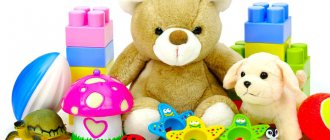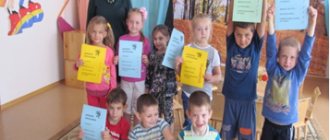You asked: “Help me write a fairy tale?” Because you want to learn how to write a fairy tale yourself.
- Your children are 4-7 years old
- Are you new to writing fairy tales?
- Do you need a simple technique for composing fairy tales?
- Do you want to enjoy the development process of your children?
The good news is that by following my tips, you will learn how to write little fairy tales for your children. You will definitely succeed if you follow simple rules. If you go step by step.
So, let's go!
Do you need a fairy tale hero or heroine?
Write a fairy tale about a person, animal, plant or any object: a toy, a teapot, a spoon, a light bulb, a table, a tablet. About everything that catches your eye or comes to mind. If you wish, you can revive anything, even natural phenomena. But people or animals most often act as the main characters in fairy tales.
What do you think is most important for a hero?
Of course, his character and appearance.
Think about what your hero is like
He's funny? Smart? Brave? Beautiful?
Also don't forget to come up with small flaws
It is small? Shy? Are you often lazy? Stubborn?
Creating a character in a little fairy tale can take some time. But if you get a convincing hero or heroine who evokes sympathy and a desire to help him, then half the battle is done. By the way, an invented character can be made the hero of a variety of stories.
Use these building blocks to create the character of the hero of your fairy tale.
|
|
As you understand, one hero or heroine is not enough for a fairy tale.
Where to begin
You can compose fairy tales casually, on the go. After all, when your hands are busy with housework, your head is free for creativity. The child will be happy to participate in the development of a fairy tale plot and in the game, quietly expand his vocabulary, consolidate the grammatical structure of speech, and, most importantly, practice the art of storytelling (oral monologue speech).
You can write fairy tales about anything, even about vegetables and household utensils, but first practice on “simple” material. There are different “recipes” for organizing such creative training. How you use them depends on the age of the child. A child over 4 years old can compose together with an adult, and a 5-6 year old can already compose quite freely on his own, and the adult’s task is to give impetus to composing. Much depends on his and your creative capabilities, the conditions in which you will start writing (whether it will be in a specially allotted time or you will have to write while doing other things, or maybe while on the road).
Place the hero of your short fairy tale in a specific time and space
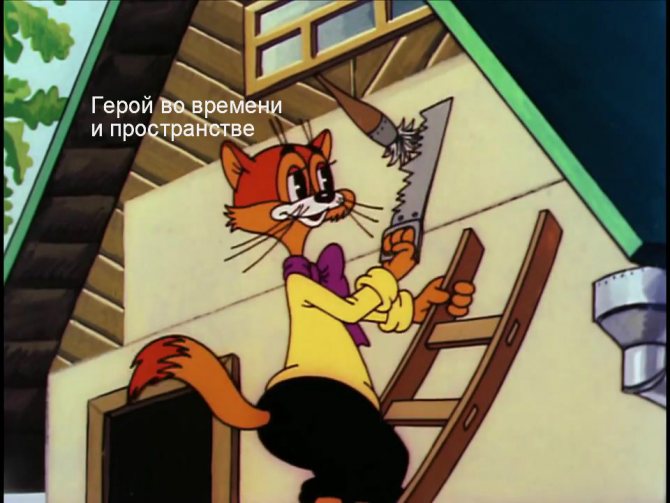
Consider whether your story takes place in a real or fictional world.
Now? A long time ago? Or in the distant future?
How long will it take the hero to overcome all difficulties and achieve his goal?
A day, a few years, a century?
Place your character in a familiar or, conversely, unusual environment.
Keep it simple. You can, for example, place the hero in your apartment and imagine a living room filled with cozy armchairs and sofas with cushions. Or the kitchen. Or a nursery. Or a yard.
Remember to include all your senses. And to do this, go inside your hero or heroine and imagine.
- What do you see: a key, a strange object, a piece of paper, a letter, an inscription from the clouds?
- What do you hear: the ticking of a wall clock, the movement of cars on the street, barely audible steps?
- What smell bothers you: a strange aroma, a burning smell, a sweet aroma of cookies?
- What do you feel: a breath of wind, chills, goosebumps, the warm touch of a ray of sunshine?
- Maybe the taste of hot milk or the metallic taste of fear appeared in your mouth?
MAGAZINE Preschooler.RF
We compose didactic fairy talesIn didactic (educational) fairy tales, the material being studied is presented in a vivid and imaginative form. In such stories, symbols and objects to which one needs to arouse interest become animated and fall into the fairy-tale image of the world. Those. educational tasks and information are “presented” in the form of didactic fairy tales.
The famous psychologist and psychotherapist Doris Brett wrote: “We adults should remember that if we want to teach a child something or convey some important idea to him, we need to do it in a way that is recognizable, digestible and understandable .
One of the first creators of didactic works was L.N. Tolstoy. He believed that the teacher’s story would give the child much more knowledge than dry textbook material. Therefore, children of the Yasnaya Polyana school received information about natural history, geography, and history in the form of fictional stories. But in addition to educational objectives, these stories also contain high educational goals.
A striking example of one of these didactic fairy tales by Tolstoy is the work “The Ant and the Dove” .
An ant crawled to the stream to drink. A wave came and nearly drowned him.
The dove was carrying a branch: she saw that the ant was drowning and threw the branch to him.
The ant sat on a branch and escaped.
Then the hunter laid out a net and wanted to catch the dove.
The ant crawled up to the hunter and bit him on the leg.
The hunter groaned and dropped his net.
The dove fluttered and flew away.
Pirkko Koskimies and Maja Lindgen's series of fairy tales about the Fluffy Bunny can serve as a source of inspiration for you or just material for telling and reading to children. These educational tales tell about the amazing adventures of a little bunny. Here is a short typical excerpt from one fairy tale: “Autumn has come. Fungi began to jump out of the ground. At first small, they then grew into large and juicy ones. Red, yellow, brown leaves decorated the trees. Most birds are going to fly south. They came to say goodbye. The birds remaining for the winter, Fluffy and the squirrel Kurre, wish them: “Happy travel! Come back in the spring!” »
Speaking about didactic fairy tales, one cannot fail to mention the short, fascinating and educational works of G.N. Yudina. His texts contain a lot of information about electricity, watches, divers, animals and plants; they tell who has which ears, eyes, tails, tongues, which insects, birds and animals live in which house.
Fairy tale "A Pig Away"
One day a dog invited his pig neighbor to dinner. She set the table in the garden, laid out a beautiful tablecloth, laid out napkins, salt in a salt shaker, lilacs in a glass and even candles in candlesticks.
I prepared all sorts of food: cheese, beets in sugar, currants in a glass, plum juice, and fried sausages with lard for myself.
The pig came, didn’t even say “hello”, climbed onto the table in her boots, ate everything, left nothing for the dog, even salted the candle and ate it along with the lilacs.
Then she lay down on the tablecloth and said:
- You're boring, dog! You should read some poetry or a fairy tale...
“You have no conscience,” the dog got angry. - Pig, you are a pig!
Get out of here now!
And since then the dog has been angry with the pig. (G. Yudin)
Do you remember the famous Soviet-Japanese cartoon “The Adventures of Little Penguin Lolo” ? From this wonderful cartoon about the little penguin Lolo and his friend Pepe, children will learn in an interesting and accessible way about the life of penguins and other animals of Antarctica and the harsh nature of the Far North.
Let's practice writing fairy tales
You yourself can also come up with fairy tales that will help your baby learn the names of colors, learn letters, learn about natural phenomena, or learn how to behave correctly when visiting. Fairy tales can be written about anything, the main thing is that the child finds it interesting.
Sometimes invented stories arise spontaneously. Mom, seeing that her son or daughter cannot learn to distinguish colors, takes a sheet of paper, a simple pencil, paints and begins to tell: “Once upon a time there was a good old book. The pictures in it were boring, black and white. High, high in the gray sky a white sun was shining (we draw the sun with a simple pencil). The grass and trees were black (we draw). And the river is of an incomprehensible muddy color (we draw it). The book was very sad that it could not please its readers with colorful pictures. One day a book was placed next to a box of paints (we put paints next to it). The book begged: “Lovely colors! Please make my pictures funny! Paint them different colors!” The paints agreed and got to work. They just couldn’t agree on who was coloring what (we show how the colors push each other). Maybe you can help them figure it out?” During the course of such an educational fairy tale, the meaning and importance of completing the game task is revealed.
To learn how to write fairy tales, to begin with, you can use familiar plots (fairy tales “Kolobok” , “Teremok”, etc.) as a basis, “adjust” your themes to them and “fill” them with the necessary content. When writing a fairy tale, it is necessary to take into account the age characteristics of the child. The younger he is, the simpler and shorter the fairy tale should be.
Well, let's try to compose our own didactic fairy tales. We choose, for example, the topic “What do plants need to live” and compose our own didactic fairy tale based on the plot of the well-known fairy tale “Porridge from an Axe” .
How a bunny grew a carrot
The little bunny loved to eat carrots, and he decided to plant his own carrots. “What’s easier! - he thinks. “I’ll put the seeds in a box and a big carrot will grow . I waited a day, waited two - no carrots in sight. The little bunny decided to ask the pine tree why it grew so big? “And the earth feeds me ,” answered the pine tree. The little hare dug up some earth, put it in a box, planted the seeds there and began to wait. But the seeds still don’t grow. Again the Little Hare asked the pine tree: “Pine-pine, why are you so big?” . “And the rain is pouring on me ,” answered the pine tree. The little hare filled the watering can with water and watered his seeds. But again the carrots don’t grow. And the pine tree whispers: . ” The little bunny placed a box of seeds under the sun's rays. And soon the first green sprouts appeared and began to grow. And below, in the ground, a red carrot can be seen. By the end of summer, the bunny had grown such a large and sweet carrot - delicious! It turns out that even a small seed needs sun, water and soil to grow.
To reinforce this, you can offer your child to grow dill, parsley, onions, and carrots at home.
Now let's compose a fairy tale about geometric shapes based on the fairy tale about the three little pigs.
House for Circle, Triangle and Square
Once upon a time there lived a Circle, a Triangle and a Square. They often argued which of them was more important. “Without me,” said Krug, “not a single car will move: the wheels are round!” . “And from me,” Kvadrat continued, “they make tables and chairs . “And I, and I,” Triangle echoed, “look like a mushroom cap!” They argued and argued until autumn came. The Circle, Triangle and Square felt cold, and they decided to build themselves houses. Krug built a round house, but his house kept rolling away. Kvadrat's house was square and without a roof. When it rained, Kvadrat felt very cold and wet in the house. Triangle built himself a triangular house, but could not enter it - there were no doors. The Circle, Triangle and Square suffered and suffered and decided to build one big common house. The walls of the house and the door were made from a square, the roof from a triangle, and windows from a circle. Friends lived happily in such a durable house. Did you like the fairy tale? Then take a pencil and try to draw their house (or, if you have prepared the parts of the house in advance by cutting them out of cardboard, you can invite your child to assemble them).
What else can you write fairy tales about?
- About nature and natural phenomena (rain, snow, sun, whirlpool of water in nature, etc.).
- About relationships with people and rules of behavior.
- About plants (flowers, vegetables, fruits, mushrooms, etc.).
- About animals (animals, birds, insects, fish, etc.).
- About mathematical concepts (numbers, geometric figures, etc.).
- About letters (what the letters look like, what words start with these letters).
- About professions, transport, furniture, clothing, etc.
| Next > |
What happened to the Hero or Heroine?
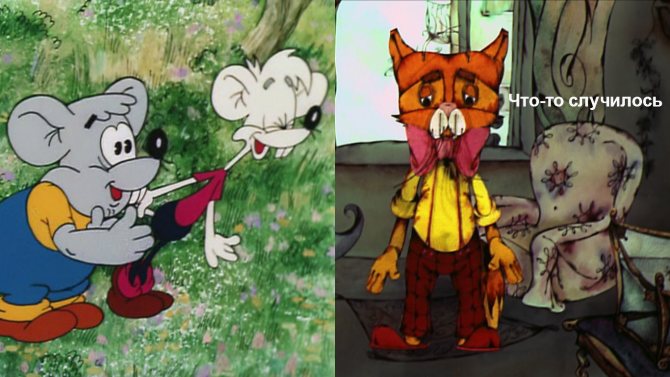
Please note that most fairy tales of all times use the idea of "a lady in trouble" or "a boy in trouble." These ideas always work!
Write what happened to the main character
- unusual phenomenon
- the villain conjured something,
- some action shifted the balance,
- disease,
- stealing something vital,
- a loss,
- poverty and the need to survive,
- a task to save or protect someone, perhaps the whole world.
Come up with goals
- What goal does the hero set for himself?
- what actions does he need to take to achieve his goal?
- What makes him go towards his goal: love? justice? Liberty? compassion? looking for adventure? Security and fear? self-realization?
Excursion into the history of TRIZ
TRIZ stands for “the theory of inventive problem solving.” It was invented by Genrikh Saulovich Altshuller (1926-1998), known not only as an inventor, but also as a science fiction writer. He published his literally and figuratively fantastic works under the pseudonym Genrikh Altov. His “Alpha Eridani” was dearly loved by our mothers and grandmothers, and in general the annals of Russian science fiction were replenished with several dozen of his works [G. Altov, 1960].
Work on the theory of solving inventive problems began after the Second World War. Soon, Rafael Borisovich Shapiro (1926-1993) joined the research activities, who also gained fame not only as an inventor, but also as a writer, writing under the pseudonym Rafail Bakhtamov. His adventure story “The Lord of the Oxy-World” [R. Bakhtamov, 1965].
This symbiosis of writing and invention in working on TRIZ led to an interesting result. First of all, the authors of TRIZ considered it necessary to change the psychology of invention, and only then talk about the technological side of the process. They outlined their views in the work “On the Psychology of Inventive Creativity” [G. Altshuller, R. Shapiro, 1956]. And only later the book “Introduction to TRIZ. Basic concepts and approaches", which went through several reprints [G. Altshuller, 2011].
The authors pay a lot of attention to the need to correctly formulate the problem in order to immediately eliminate solutions that are not very effective and promising. In general, TRIZ is based on several dozen techniques and standard solution templates suitable for a wide range of tasks. All that remains is to choose the most suitable ones. How to choose? But for this you need to work on developing thinking using the TRIZ method, and from early childhood.
Since we are talking about children, and the youngest ones at that, we can’t do without fairy tales. How are fairy tales for children used in TRIZ? In the TRIZ methodology, fairy tales are not only listened to and told. Children themselves become authors, because in TRIZ, writing fairy tales is the same natural process as memorizing poems, letters and numbers in traditional education, only more interesting. How does composing a fairy tale take place in TRIZ?
This, of course, creative process is divided into components understandable to children, from which, like a wall of bricks, a real fairy tale grows. Of course, young writers cannot do without the help of adults. And the most interesting thing about this is that using TRIZ technology, absolutely any child can compose fairy tales!
What obstacles must the Hero of the written fairy tale overcome?
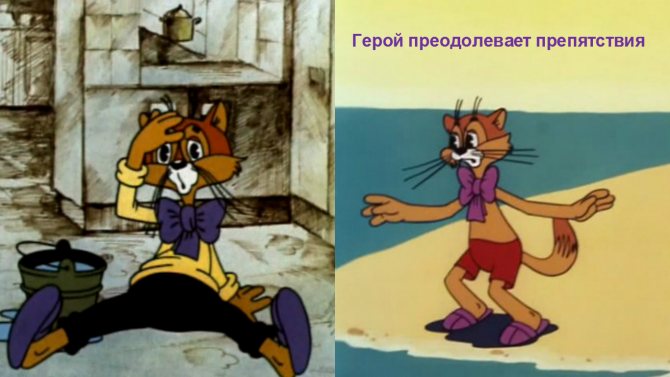
- solve a small or big problem,
- reach some destination as a result of travel,
- help yourself, a family member or simply save a person,
- fulfill the dream,
- get an answer to a question
- break the spell
- to cure or to be cured?
- find a friend or loved one.
Group essay
Why not have fun at a children's party or during family gatherings?
Several children participate at once. Children propose a theme, heroes of a fairy tale, an adult deals with the plot, involving the children in its development. The presence of several participants at once makes the composition of a fairy tale more diverse, interesting, and its content complete and deep. Involving other adults will only enrich the game. In the process of joint activity, the child gets a clear idea of what it means to come up with a fairy tale step by step. The game teaches him to compose phrases more clearly and thoughtfully, because the other participant must understand him in order to come up with his own continuation. First, offer to come up with a name for the fairy tale, characters, tell what they will be like, describe their appearance, mood. Then the fairy tale is “assembled” from the children’s answers to your questions: “Where does the fairy tale begin? How will events develop? (what happens next?) What will be the most poignant moment? Which one is the most interesting, funniest? How will the fairy tale end? Participants express their continuation answers in a chain, one after another. Changing questions during the process of composing a story activates children's attention. If children confidently cope with composing a fairy tale according to the proposed plan, you can offer additional questions, suggesting new directions for imagination. Invite the children to retell what they have already written, and involve them in discussing what others have written. The fairy tale you have written is worth writing down to read it the next day or when you meet friends again. You can invite children to compose a fairy-tale “series”.
Your little fairy tale should have a happy ending
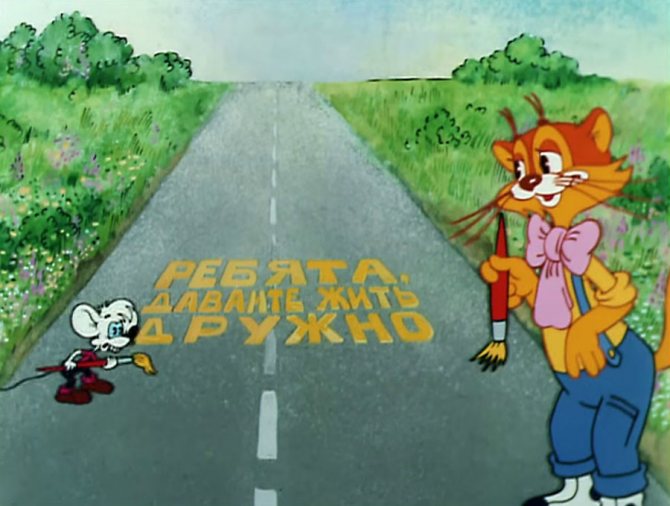
Even though we don't always get what we want in real life, the world of fairy tales makes us believe that anything is possible.
Try these ideas:
- the main character of the fairy tale saves himself, his family or someone else,
- the hero solves the puzzle and reveals the secret,
- the main character overcomes obstacles and his character or character trait changes,
- the main character becomes happier, richer, smarter, he has friends.
re-enactment
Invite your child to “revive” the fairy tale: come up with costumes, develop the behavior of the characters in accordance with their personalities, think through the facial expressions, gestures, and intonation of each character. The purpose of such a task is to activate a creative attitude towards words. Creative comprehension should manifest itself in the ability to transform a verbal fairy-tale image into a dramatic one.
Collective creativity is also assumed here. Not only children, but also toys and dolls can play roles. Puppet theater characters can become irreplaceable helpers (such toys are sold in stores, but if you wish, you can create them yourself). The fairy tale chosen for dramatization can be composed or read earlier - in this case, creativity lies not in the creation, but in the embodiment of the plot. When assigning roles, the individual characteristics and capabilities of the children, as well as the toys used, are taken into account, and the characters’ personalities are discussed. All participants in the performance are involved in the rehearsal, even those who are not involved in a specific scene (they monitor whether the performance corresponds to the text of the role, help to find the most successful embodiment of the image, and participate in its “elaboration”). An important stage of preparation will be the production of scenery, which will attract the attention of little participants to those details that most often elude children's attention: the location of the action and its change, means of conveying the atmosphere of a fairy tale, mood (scary, dark or light, fun). The participation of adults in dramatization allows children to develop the ability to emotionally immerse themselves in a fairy tale, to creatively comprehend it, and the ability to create facial expressions and intonation (based on the embodiment of a verbal fairy tale image).
Make sure that the text of the fairy tale you composed is appropriate for the child’s age.
For children ages 3 to 5, use simple themes.
The hero did not know something and thanks to simple actions he found out. The hero was sad, but became cheerful. Someone was greedy, but thanks to the actions of the hero, he became kind. The hero corrected the injustice, made friends with other characters, saved the character and made him smile. I lost something, but as a result of my actions I found it.
For children aged 5 to 7 years, you can make the topics more complex.
Add villains, let the hero overcome three, not one, difficult situations. Add evil magic to your fairy tale, include the hero’s rebellious actions: disobedience, running away from home for adventure, committing a forbidden act. Weave morality into the story, summarized in proverbs and sayings.
And before we move on to the examples, get your GIFT!
A book with educational games for children 5-7 years old!
The Tale of Toys
Choose toys for the fairy tale, for example, a cat and a mouse, and start telling the story, accompanying the words with a display of actions: “Once upon a time there was a fluffy cat (you must stroke the pussy, showing its fluffy fur), the cat found out that the mouse had made a hole for itself in her house ( show an imaginary house of a cat and a mouse in a hole). So she began to watch over her. The cat steps quietly with its fluffy paws, you can’t hear her at all. The mouse ran out for a walk and ran far from the hole. And suddenly I saw a cat. The cat wanted to grab her. No such luck! The clever mouse darted into its hole.” Then invite your child to think about what toys he would like to talk about. In the process of performing such a task, the child’s vocabulary is activated (he more actively uses those words that he already knows, but does not yet use in his speech), coherent speech develops: the child selects the necessary definitions, forming the appropriate grammatical form of the adjective, and from this vocabulary material constructs a coherent statement. When answering questions, he pays attention to the characteristic features of the appearance of toys (color, shape, material), selects comparisons and definitions. Subsequently, encourage this type of creativity in your child’s play. Offer to make a drawing for a fairy tale, ask to tell (show) a fairy tale about toys to grandma or friends who come to visit.
Examples of how to write a fairy tale yourself
And now - examples of magical stories and pictures for visual warm-up. Start with a small fairy tale. And in order to open the doors of your imagination, look at photographs and pictures. Let your imagination run wild.
My favourite dog
This story was written by a mother together with her five-year-old son, whose dog died. The son told his dream, and his mother took dictation.

A Tale of Butterflies

- Mommy, where did butterflies come from? - I ask.
And she tells me.
One day in the fall, a Wizard watched children playing on the lawn. The children laughed and had fun, but the wizard was sad. I was sad because I saw how time was passing, taking with it people, flowers and all the beauty of the world to other worlds.
“We need to preserve the beauty here on earth for people,” thought the Wizard. He took out a magic box and began to put sunbeams, the blue of the sky, the glare of flowers, children's laughter, and the breath of wind into it. When the children went to bed and the clearing was empty, the wizard opened the box. A light rhythmic rustling filled the air, and beautiful butterflies fluttered everywhere where the gaze penetrated.
“Fly to a magical land to your Queen,” said the wizard. - Now your purpose is to give people beauty.
The butterfly kingdom is hidden among the impenetrable jungle and high rocks. There are many wonderful fragrant flowers and herbs, clear lakes and crystal waterfalls. It's summer all the time here and the sun shines all year round. This wonderful country is ruled by the beautiful and kind Queen of Butterflies. She is very beautiful, cheerful and joyful.
This is where the most skilled artists and the most beautiful butterflies in the world live. Every morning, artists draw colorful patterns on their wings and every spring they send them to earth to delight people with their beauty and tenderness.
Visualization
Take a look at these pictures. Get into their mood and characters. And they will give you the idea of your own magical story.
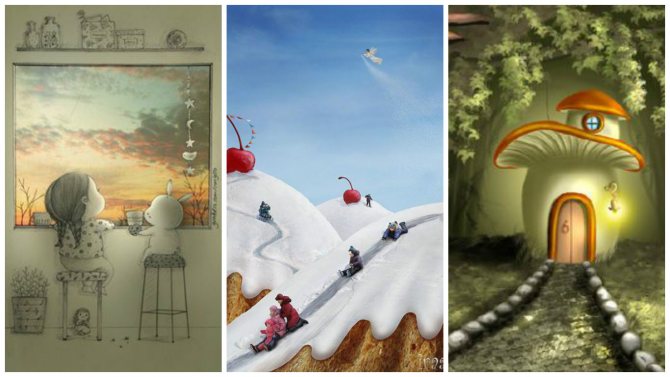
Fairy tale on a free theme
This genre is the pinnacle of a child’s verbal creativity. He must independently come up with the name of the fairy tale, the characters, the conditions for the action of the heroes, the action itself: the beginning, the climax, the ending. The child learns to use his life experience and convey it in a coherent narrative. He develops the ability to clearly, clearly, and consistently express his thoughts. The mother’s task is to create an emotional mood and give impetus to the creative imagination. It is important that the child strives to make the plot entertaining, not forgetting about the verbal presentation of the fairy tale.
Create, invent, try! Children's fairy tales have always been a very special genre of folk tales and served not only as a means of amusement for children who write them, but also as one of the most important means of developing children's thinking and mastering the experience of previous generations.
Ekaterina Asonova teacher, philologist
Why learn to write fairy tales yourself?
- You have to be able to, because at school they give tasks - “compose a short fairy tale about an animal, compose a fairy tale about...”
- To get the most pleasure and to develop the child’s thinking
- To receive sincere emotions and a great mood
Author: Natalia Rozanova-Tesakova, coach, trainer, author of creative techniques and books
When copying material or part of it, a direct link to the site and authors is required
TRIZ: fairy tales-riddles
Writing fairy tales is far from the only option for using the “fairytale” potential in TRIZ. An equally interesting area in TRIZ are fairy tales and riddles. What kind of fairy tales are these? These are, in fact, the most ordinary short fairy tales, but without an end. Children must figure out for themselves exactly what the main character did, what he came up with to get out of a difficult situation.
Of course, later, when the children have voiced all their versions, you can read to them how it really happened. The basis for working with fairy tales is the brainstorming method, when children are asked to come up with any ideas that come to their minds. As in the brainstorming technique for adults, at the initial stage of discussion it is forbidden to reject ideas. You can only add your thoughts to the previously voiced proposals.
This kind of work liberates the thinking of children, and adults too. In this regard, a very interesting selection of fairy tales-mysteries from the book “In Hot Africa. We develop creative thinking in preschoolers aged 4-6 years” [V. Bogat, 2008]. The main characters are a lion cub and a turtle, and together they think about the pressing problems of wildlife in Africa. For example, how to save bright and visible butterflies from afar from the birds that feed on them. Or how to get bananas hanging high on a palm tree.
These characters were so loved by children and their parents that a sequel was soon released. More precisely, a new series of short fairy tales-mysteries from the life of a lion cub and a turtle called “Big discoveries of a little lion cub” [V. Bogat, 2015]. After reading it and thinking about the tasks, the child will receive a good set of life hacks for various life situations in his arsenal.
Another author, scientist-teacher and TRIZ methodologist Anatoly Gin, works well with fairy tales and riddles. His “Fairy Tale Problems from the Cat Potryaskin” have long been loved by both adults and children [A. Gin, 2002]. Here, riddles in the form of fairy tales involving historical and mythical characters are asked by the main character, the cat Potryaskin. He also gives his own version of the answer. However, this does not eliminate brainstorming on the part of readers, because the more different ideas there are, the easier it will be to find the best solution.
The reading public liked the cat Potryaskin so much that over time a new book, “Inventive Tales from the Cat Potryaskin,” was published, which included both new fairy tales and riddles for children, as well as the most striking riddles from the previous edition [A. Gin, 2012].
However, TRIZ problems can be found in almost any children's fairy tale. How to search? Ksenia Nesyutina, a psychologist, mother of three children and creator of an online school for parents, gives her examples in her author’s blog. The article “Effective fairy tale reading: coming up with TRIZ tasks for children” will give you specific ideas and tell you how to look for new TRIZ ideas in children's fairy tales yourself [K. Nesyutina, 2014].
For example, the well-known fairy tale about a cat, a rooster and a fox turns out to be a real treasure trove for developing creative thinking and skills in finding a way out of difficult situations. In particular, it turns out that shouting “ku-ka-re-ku” is far from the only way out for a rooster caught in a fox’s mouth. Moreover, traditional solutions proposed by the authors of fairy tales are often inferior in creativity and effectiveness to what small children can come up with. However, read, and you will find out everything for yourself [K. Nesyutina, 2014].
But if children have already learned to read and write on their own, you can give them a very useful book “TRIZ Sketches. Games, poems and fairy tales for the development of children's creative imagination" [E. Nekhaeva, 2019]. The book contains special questions and tasks, the answers to which can be entered directly into the book. Tell the children to be sure to use this option and “immortalize” their answers in the book. The publication is intended for junior schoolchildren and senior kindergarten groups, and over time they will probably be interested in returning to the tasks they have already completed and thinking about what other solutions can be found taking into account their already accumulated, albeit small, life experience.
In general, simple and kind children's fairy tales can greatly help in such a complex matter as the development of creative thinking. The main thing is to learn to read them meaningfully and “throw” a good idea at the right time to the child, so that he gets food for thought at just the age when thinking is most open to new impressions and non-standard solutions.
This is the most important thing that we wanted to tell you about TRIZ fairy tales in pedagogy. We remind you that we are still waiting for you at our program “TRIZ in practice: a creative approach at work and in life”, and at the end of the article you will find a question on the topic discussed this time. We hope that we have helped you diversify your communication with your children and wish that you continue to believe in miracles and work miracles for your children!
We also recommend reading:
- Storytelling
- Invention: a selection of useful materials
- TRIZ, RTV and TRTL in practice: dealing with the Soviet intellectual past
- TRIZ classes for children: raising geniuses and simply happy people!
- Creativity Development Digest
- TRIZ and design thinking in everyday life
- A selection of useful materials about creativity and creativity development
- Secrets of inventors: a selection of useful materials
- Good books for self-education
- TRIZ methods in kindergarten
- Charette procedure
Key words:1TRIZ

